Understanding the Havahart Vole Trap for Effective Control


Intro
Voles are small rodents that can pose significant problems for both residential gardens and agricultural lands. Their burrowing and feeding habits can result in considerable damage to plants and crops. This article aims to provide valuable insights into using the Havahart vole trap as an effective means of controlling vole populations.
Understanding the construction and operational principles of these traps will enable homeowners and regional farmers to address vole infestations efficiently. The article will also delve into the biology of voles, explore pest prevention strategies, and describe various control methods that can be employed alongside trapping.
Understanding the Pest
Identification
Voles are often confused with other small rodents, such as mice or lemmings. They possess a stocky body, a short tail, and a blunt snout. Their fur is typically brown or grayish, allowing them to blend into their environment easily.
To accurately identify voles, it is essential to observe their behavior. Voles tend to create surface runways and might leave behind distinct droppings that are cylindrical and about one quarter inch long. Additionally, the presence of feeding holes around root systems can indicate vole activity.
Life Cycle
Understanding the life cycle of voles is critical in managing their population. Voles reach sexual maturity quite rapidly, usually within four to six weeks. Female voles can give birth to several litters each year, with an average of four to six young per litter. This reproductive capacity means that vole populations can explode if left unchecked.
In temperate regions, voles breed year-round but may have peaks in breeding during the spring and fall. The young voles wean quickly and begin foraging for food shortly after birth, further contributing to the rapid increase in their numbers.
Pest Prevention Strategies
Environment Modification
One of the most effective methods of vole control starts with modifying the environment. Keeping the garden clean and free from debris can help reduce potential habitats for voles. This includes:
- Mowing grass regularly
- Removing dense shrubbery or weeds that provide cover
- Managing mulch and compost piles, as these can be attractive nesting areas.
Such preventive measures can deter voles from settling in the area in the first place.
Physical Barriers
Using physical barriers is another approach to prevent voles from reaching desirable plants. Planting crops and garden plants in wire mesh cages can deter voles from feeding on these plants. Installing underground barriers made from hardware cloth can also prevent voles from burrowing into particularly vulnerable areas.
Control Methods
Chemical Control
Chemical options for controlling vole populations are available, but they come with ethical considerations. Often, rodenticides are used, which can be harmful to non-target species, including pets and beneficial wildlife. Always read labels and use products in accordance with local regulations.
Biological Control
Biological control is another technique in managing voles. Encouraging natural predators, such as owls or hawks, can help keep vole populations in check. Creating a habitat that supports these predators can enhance their effectiveness in controlling voles over time.
Prelude to Vole Control
Vole control is a significant concern for many homeowners and agricultural practitioners. These small rodents can cause extensive damage to gardens, lawns, and crops. Understanding the dynamics of vole populations provides a path to effective management. This section discusses the importance of addressing vole issues and lays the foundation for effective trapping strategies.
Defining Voles and Their Impact
Voles are small, burrowing rodents that belong to the family Cricetidae. They typically have short tails, small eyes, and robust bodies. Common species include the meadow vole and the pine vole. Voles thrive in various environments, preferring areas with abundant plant cover. Their feeding habits can lead to significant damage to root systems, grass, and ornamental plants. They may also create unsightly tunnels in lawns, impacting the aesthetic appeal of gardens.
The ecological impact of voles is twofold. First, as herbivores, they compete with other wildlife for resources. Second, they can contribute to the decline of certain plant species due to overconsumption. Farmers often report reduced yields due to vole infestations. Such economic effects reinforce the necessity for consistent control measures.
The Necessity of Trapping
Trapping voles is often the most effective method of control. Chemical methods can be harmful to non-target species and pose risks to the surrounding environment. Unlike traditional poisons, traps can provide a more humane approach. They allow for the capture of voles without unnecessary suffering.
Utilizing traps such as the Havahart trap offers several benefits. Trapping is targeted, which means it can specifically focus on the pest species without affecting other wildlife. Furthermore, regular monitoring and maintenance of traps can help keep vole numbers in check. This approach significantly reduces the risk of a major infestation and can aid in the sustainable management of the ecosystem.
By understanding the importance of vole control and the necessity of trapping, homeowners and agricultural practitioners can adopt effective strategies. This understanding provides a strong basis for further discussions on the Havahart vole trap and its implementation.
Overview of Havahart Traps
The Havahart traps serve as a fundamental tool in vole control, appreciated for their design and effectiveness. Understanding these traps is essential for anyone facing a vole problem, as choosing the right trap can greatly affect the outcome of pest management efforts. Each type of trap caters to different needs, making it vital to know their unique features and applications.
History of Havahart
Havahart was established in the early 20th century, making a mark in the field of humane animal trapping. The brand emerged with a commitment to developing traps that align with the principles of humane pest control. Over the decades, Havahart evolved, adapting its products based on user feedback and advancements in engineering. Today, the traps are synonymous with reliability. Their historical commitment to humane methods is still evident in today's designs.
Different Models Available
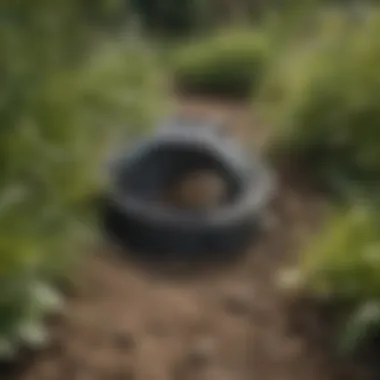
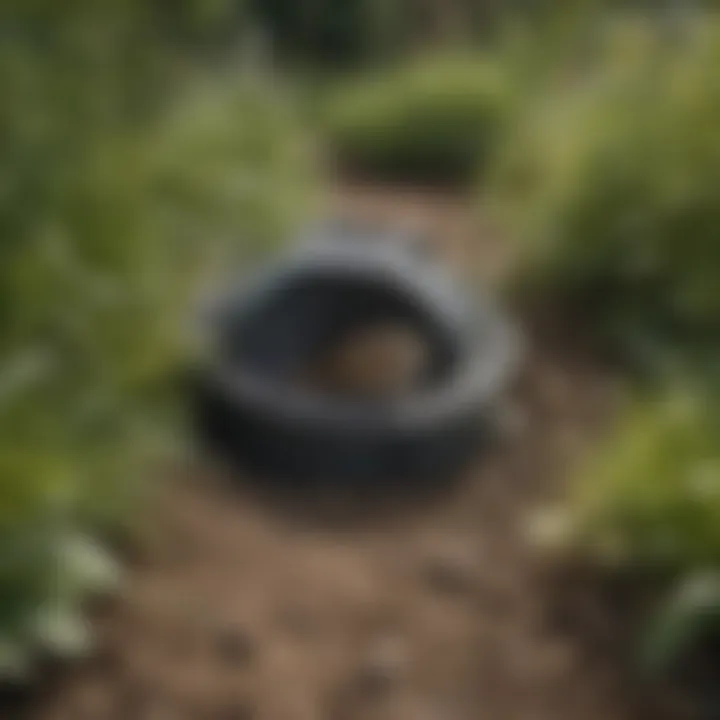
Havahart provides a variety of traps, each tailored to specific trapping situations. Understanding the various models is crucial for effective vole control.
Live Traps
Live traps are designed to capture voles without harming them. The key characteristic of these traps is their ability to contain the animal safely until a user can relocate it. These traps are popular among those looking to manage rodent populations without resorting to lethal methods. A unique feature of live traps is the one-way door mechanism, which allows voles to enter while preventing their escape. However, this method requires ongoing monitoring, as trapped animals need to be attended to promptly to minimize stress.
Snap Traps
Snap traps are a traditional and effective option for vole control. They function by quickly killing the target animal upon activation. Their critical characteristic lies in their fast-acting mechanism, which ensures immediate results. Snap traps are favored for their simplicity and ease of use. A standout feature is their ability to target smaller rodents effectively. While they offer a precise and quick solution, they may raise concerns for those focused on humane trapping, making them a contentious option in the realm of ethical pest control.
Tunnel Traps
Tunnel traps provide a unique approach by exploiting the natural habitats of voles. These traps are placed within vole runs, capitalizing on the animals’ established pathways. The primary benefit of tunnel traps is their discreet nature, which minimizes the visibility of the trap itself. This can lead to more successful captures, as voles are less likely to avoid the area. A defining feature is their construction, designed to blend seamlessly into the environment. However, effectiveness can depend on proper placement and may require a deeper understanding of vole behavior to yield the best results.
In summary, the Havahart traps reflect a commitment to versatile and humane vole control solutions. Understanding each model helps users choose the appropriate mechanisms tailored to their specific needs.
How Havahart Vole Traps Work
Understanding how Havahart vole traps function is essential for effective pest control strategies. These traps are designed with mechanics that ensure the capture of voles, thereby reducing their populations in residential and agricultural settings.
Mechanics of the Trap
Havahart vole traps are primarily mechanical devices that operate on simple yet effective principles. At their core, they rely on the physical design that allows for easy entry of the voles while preventing their escape once inside. Most traps feature a tunnel-like structure, mimicking the voles' natural habitat, which attracts them instinctually.
The body of the trap often consists of durable materials, ensuring longevity and stability even when exposed to weather conditions. One common feature includes a one-way entry door. This allows the voles to enter but does not provide a means for exit. This design is crucial in ensuring that once a vole is trapped, it cannot escape, making the trapping process more efficient.
Trigger Mechanisms Explained
The effectiveness of any trap hinges significantly on its trigger mechanism. Havahart traps utilize various trigger options designed to maximize the success rate of capturing voles. The most typical types of triggers include:
- Sensitive Balanced Triggers: These are designed to react to the lightest touch, ensuring that even cautious voles are caught. This sensitivity minimizes the chances of the vole evading the trap after approaching it.
- Foot Triggers: When the vole steps on a designated area, the mechanism releases the entry door, capturing the animal instantly. This method is straightforward and reliable.
The reliability of these mechanisms plays a significant role in reducing the stress on the user. Effective triggers can lead to fewer repeated attempts to trap voles, thus saving time and effort.
"A well-designed trap with a precise trigger mechanism is essential in managing pesky vole populations effectively."
With proper understanding and implementation, users can ensure that the traps function at their full potential. This knowledge not only aids in effective trapping but also contributes to humane handling practices, ensuring that captured animals are dealt with in an ethical manner.
Biology of Voles
Understanding the biology of voles is crucial for effective control strategies. This knowledge helps in recognizing their habitats, behaviors, and population dynamics. These factors are essential when selecting and setting traps.
Vole Species Overview
The most common species of voles include the meadow vole, pine vole, and mountain vole. Each species demonstrates unique traits that influence their interaction with the environment. For instance, the meadow vole is generally found in more open fields, whereas the pine vole prefers dense cover. This knowledge aids in determining where traps should be placed for maximum effectiveness.
Behavioral Patterns
Voles are primarily active at dawn and dusk. They tend to stay close to their burrow systems, making their movement patterns predictable. When understanding their behavior, we can set traps in places where they are most likely to pass. Additionally, voles have strong territorial instincts and will often return to familiar trails, which can be utilized in choosing the optimal trap location.
Habitat and Feeding Habits
Voles thrive in a variety of habitats, including grasslands, wetlands, and forests. They are herbivores and primarily feed on grasses, roots, and seeds. Understanding their feeding habits is vital. It can inform the choice of bait to use in traps. If we use food sources that voles naturally seek out, we increase the chances of successful trapping.
"By aligning trap strategies with the biological insights of voles, control efforts become more efficient and humane."
In summary, a thorough grasp of vole biology significantly enhances trapping success. Homeowners can apply this knowledge effectively to reduce the impact of voles in their gardens and fields.
Choosing the Right Trap
Choosing the right trap is a critical component in effectively managing vole populations. Selecting an appropriate trapping method involves understanding various factors that can impact the success rate. Different traps offer distinct advantages, and making an informed choice can lead to more efficient control of these small rodents. Factors such as location, vole species, and population density play significant roles in determining the most effective trap options. Additionally, knowing how these elements interconnect can streamline the trapping process and improve overall outcomes.
Factors Influencing Trap Selection
Location
The location for deploying traps is key to their effectiveness. Understanding where voles are active helps in placing traps at the right spots. For example, voles tend to frequent areas with dense vegetation or near garden beds. Such locations are beneficial because they are likely where voles gather to feed or move about. A trap placed in the vicinity of vole activity can significantly increase the chances of catching them.
A unique feature of these environments is that they often showcase signs of vole activity, such as runways or holes. Identifying these signs helps target specific areas, thereby reducing unnecessary effort and time spent on less productive sites.
Vole Species
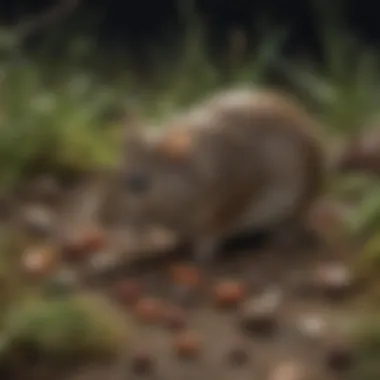
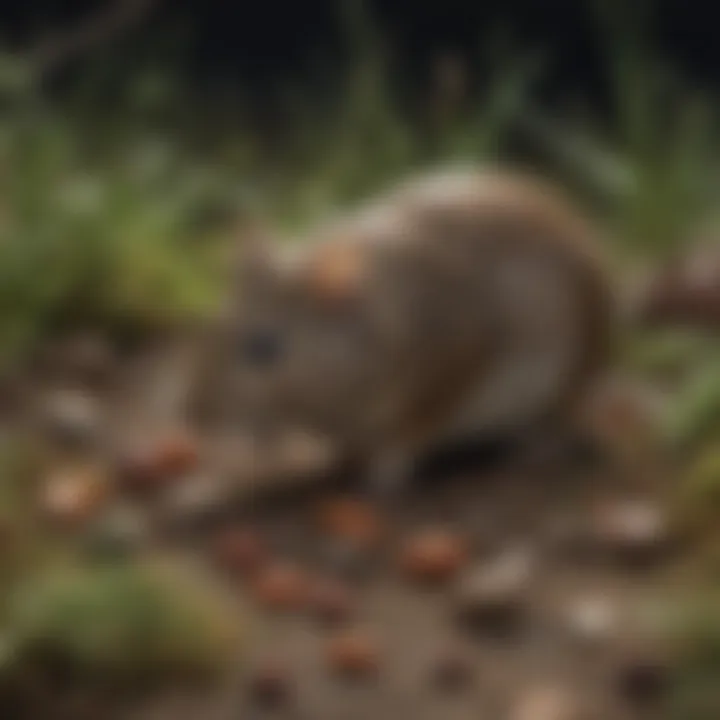
Identifying the specific species of voles present in an area is essential for trap selection. There are different vole species, such as the meadow vole and the pine vole, that exhibit varying behaviors and habitat preferences. Knowing the species helps in evaluating which traps might be most effective. For example, some traps may work better in certain habitats preferred by one species over another.
A key characteristic of different vole species is their population behavior. Certain species might reproduce more quickly, resulting in a higher population density. Selecting traps tailored to the specifics of these vole species ensures a higher likelihood of success.
Population Density
Population density of voles in a specific area cannot be overlooked. The number of voles present directly impacts how many traps are needed and their placement. In areas with higher density, more traps may be necessary to achieve effective control. Conversely, in areas with fewer voles, fewer traps might suffice.
The unique feature of understanding population density lies in its ability to dictate the timing and approach of trapping. A seasonal spike in population density might require adjustments in strategy, including increased trap count or alternative placement strategies. Evaluating population density can enhance the overall effectiveness of the vole control strategy.
Comparative Analysis with Other Trapping Methods
When considering the Havahart traps, it is important to compare them with other trapping methods available. Each method has its own set of features that cater to specific conditions and goals in trapping. For instance, the effectiveness of live traps is notable for humane handling, whereas snap traps are noted for their speed in catching voles.
Other trapping methods, such as glue traps, might lack efficiency and humane considerations, making them less suitable for responsible vole control. In contrast, comparing Havahart traps with these alternatives can provide insights into their benefits and highlight the importance of ethical considerations.
In summary, the decision on the right trap goes beyond just selecting a model. It involves a careful analysis of location, vole species, and population density, combined with a broader understanding of trapping methods. This systematic approach aids in implementing successful pest control strategies.
Setting Up the Havahart Trap
Setting up the Havahart trap correctly is crucial for achieving successful vole control. A poorly positioned or improperly baited trap may lead to minimal captures, hindering your efforts to manage vole populations effectively. Understanding the environmental factors and behavioral patterns of voles can significantly improve your trapping success. This section will delve into the optimal placement strategies and effective baiting techniques that can enhance your overall trapping experience.
Optimal Placement Strategies
When it comes to positioning the Havahart trap, location is everything. Voles tend to have specific runways or trails they follow in search of food. Identifying these pathways is key in maximizing your chances of success. Here are some factors to consider:
- Observation: Spend time observing areas where you notice voled activities, such as droppings or gnaw marks on plants.
- Moisture Areas: Voles often thrive in moist environments. Setting traps near wet areas, such as along garden edges where soil is regularly watered, may yield better results.
- Cover: Voles are timid animals and prefer to stay hidden. Place traps near cover, such as rocks or dense brush, to provide a sense of safety as they approach the trap.
Think of the placement as creating a reliable route for the voles to encounter the trap without much interruption. This can significantly influence the effectiveness of your trapping.
Effective Baiting Techniques
Baiting your trap effectively is another essential component of voles trapping. The right bait attracts voles and encourages them to enter the trap. Here are two distinct options:
Natural Food Sources
Natural food sources include foods that voles typically forage in the wild. These might consist of:
- Grains such as oats or wheat
- Fresh fruits, like apples and pears
- Vegetables, notably carrots and spinach
These natural choices resonate well with voles, as they mimic their regular diet. A key characteristic of using natural food sources is they are readily available and often less expensive. The unique feature of these baits is their enticing aroma, which can significantly increase the likelihood of voles entering the trap. However, it is important to replace natural bait frequently to avoid spoilage, especially in warm weather.
Commercial Baits
Commercial baits are often seen as the more convenient option for attracting voles. These can be found at local stores and include:
- Pre-packaged vole bait stations
- Synthetic food products designed specifically for rodent trapping
The primary advantage of commercial baits is their effectiveness; they are typically formulated to be highly appealing to voles. However, a potential drawback is that some of these products may contain chemicals that can raise ethical questions about humane trapping practices. Therefore, it is important to select products that align with your trapping values.
In summary, a successful trapping strategy hinges on both optimal placement and effective baiting. These factors, when executed thoughtfully, can create a reliable trap setup that enhances your ability to control vole populations.
Monitoring and Maintenance of Traps
Monitoring and maintaining traps are essential to ensure their effectiveness and humane operation. Regular checkups allow for the prompt removal of trapped voles, preventing undue stress to the animal and facilitating a quick resolution of the issue. Furthermore, neglecting maintenance can lead to malfunction, which ultimately reduces the efficacy of the trapping strategy.
The success of trapping voles is not solely about initial placement and baiting; it also involves ongoing care and attention. A well-maintained trap performs better and minimizes any unnecessary harm to the captured animals. Taking the time to inspect traps regularly can also inform adjustments to techniques and methods, optimizing overall vole control efforts.
Frequency of Checkups
The frequency of checkups for traps often depends on the specific trap type and the environment in which it's placed. However, many experts suggest checking traps at least once every 24 hours. This practice not only ensures that any trapped animals are handled promptly but also allows for the assessment of bait status and trap condition.
In high-traffic areas or during peak vole activity seasons, more frequent checkups might be essential. For instance, if using live traps, checks should occur once every 12 hours to ensure humane treatment for captured voles.
Regularly monitoring traps helps maintain an efficient pest control strategy while upholding ethical standards in wildlife management.
Trap Cleaning and Care
Maintaining cleanliness is crucial for the operational integrity of Havahart traps. After each use, it is important to clean traps to remove scent residue from previous captures or bait. This prevents the possibility of aversion by future voles, who may be deterred by any lingering odors.
The cleaning process usually involves:
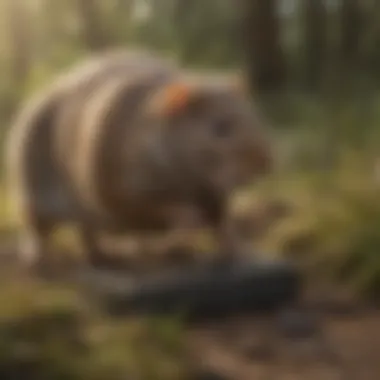
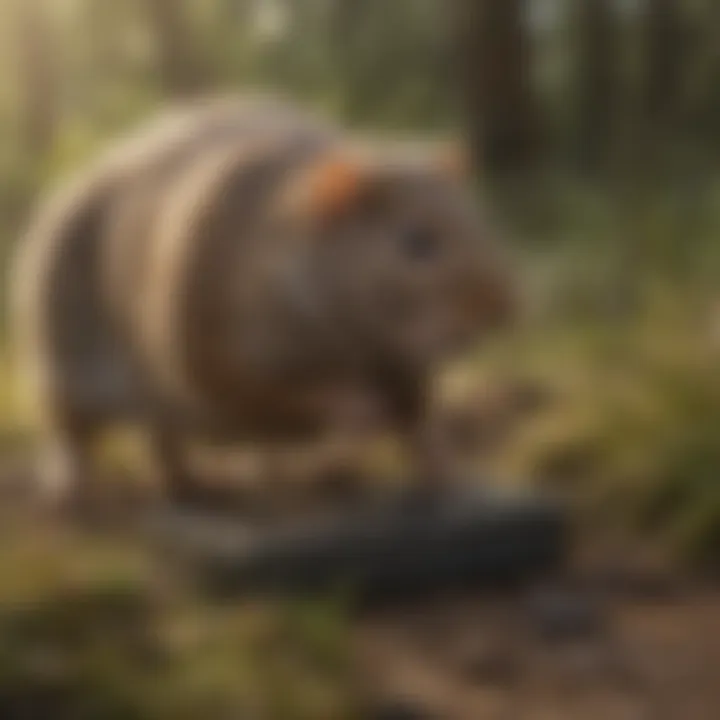
- Casting off debris: Remove any dirt and debris from the trap to ensure it functions smoothly.
- Washing with soapy water: Use mild soap and water for a thorough clean. Avoid strong chemicals which may leave harmful residues.
- Drying: Allow the trap to air dry completely before reapplying bait or resetting.
In addition to cleanliness, check for potential wear and tear. Regular inspections help in identifying any parts that require repair or replacement. This proactive maintenance approach ensures that the trap remains effective and ready for each use.
Ethical Considerations in Vole Trapping
The topic of ethical considerations in vole trapping is crucial in addressing not only the effectiveness of pest control but also the responsible treatment of wildlife. When dealing with voles, it is essential to keep in mind that these creatures, while often considered pests, are part of a larger ecosystem. Proper ethical practices can lead to effective management of voles while maintaining the integrity of their populations and habitats.
Legal Regulations on Trapping
First and foremost, understanding the legal regulations surrounding trapping is vital for homeowners and anyone involved in pest control. Different regions have various laws that govern how and when voles can be trapped. These regulations often dictate the types of traps that can be used, the locations where traps can be set, and the required licenses for trapping wildlife.
Homeowners should consult local wildlife authorities to ensure compliance with regulations. By adhering to legal requirements, individuals can avoid fines or legal action, ensuring their trapping efforts are both responsible and within the bounds of the law. Additionally, following these regulations helps maintain a balance between pest control and wildlife preservation.
Humane Handling Practices
Another important aspect of ethical trapping is humane handling practices. The goal of trapping should not be to cause unnecessary harm or suffering to voles. Using traps that are specifically designed for humane capture is essential. Havahart traps, for instance, are known for their live capture mechanisms that allow for safe and effective removal of voles without causing physical harm.
When handling trapped voles, it is important to release them in a suitable location, away from residential areas. This helps to ensure their survival while preventing them from returning to your property. Always check traps regularly to minimize stress to captured animals.
Here are some key humane practices:
- Use non-lethal traps to capture rather than kill.
- Monitor traps frequently to reduce the time voles spend in captivity.
- Release captured voles responsibly in an appropriate environment.
- Avoid overcrowding traps which can lead to injury.
"The principle of humane trapping reflects the respect for all living beings and acknowledges the role each plays within our environment."
Case Studies and User Experiences
Understanding the effectiveness and practical applications of the Havahart vole trap can be greatly enhanced through case studies and user experiences. These real-world insights offer valuable perspectives on how individuals and communities effectively manage vole populations. Analyzing specific instances allows readers to grasp the variety of strategies employed, observe the outcomes, and understand potential challenges faced by users in both residential and agricultural settings.
By evaluating these experiences, one can identify best practices, common pitfalls, and adjustments necessary for optimal results. This section consolidates the knowledge derived from actual users, which can help guide decisions for effective vole control. The experiences shared often highlight the significance of adaptable techniques that cater to individual environments.
Residential Applications
In residential settings, homeowners frequently encounter issues with voles that can damage gardens and landscaping. One prominent case involved a homeowner in suburban Vermont who reported that her flower beds were being devastated by vole activity. To address the issue, she opted for Havahart live traps positioned at strategic points around her property. By observing the voles’ movement patterns and placing traps near tunnels, she was able to capture several voles over a few weeks.
Users in similar situations often recommend:
- Monitoring areas where evidence of vole activity is spotted, such as the presence of uprooted plants or droppings.
- Employing natural baits like peanut butter or sunflower seeds, which proved effective in attracting voles into the traps.
- Setting traps in early spring and fall, as these periods often show higher vole activity due to mating or food foraging.
The homeowner also noted that diligence in checking the traps at least every 24 hours was vital for maintaining effectiveness and for ethical treatment of captured wildlife.
"Using Havahart traps was effective and humane, allowing me to manage the vole problem without resorting to harmful methods." – Vermont Homeowner
Agricultural Use Cases
Farmers encounter unique challenges with voles, particularly in areas where crops are at risk. For instance, a case study from an organic vegetable farm in California illustrated the successful use of Havahart traps in managing a substantial vole population that threatened various crops. The farmer employed a systematic approach to monitoring and trapping voles.
The following strategies were notable:
- Establishing a grid system for placing traps, which maximized coverage over the affected areas.
- Alternating between live traps and snap traps to find the most effective method based on the population dynamics observed in the field.
- Collaborating with agricultural extension services to enhance his trapping strategy based on tailored recommendations specific to his farm’s conditions.
Various farmers indicated that keeping records of traps caught and sites where voles were scoped out helped improve their success rate over time. By refining their strategies based on data collected, they could adapt to changing vole behaviors, leading to better crop preservation.
In summary, case studies and user experiences provide crucial evidence of the strategies employed with Havahart traps in managing vole populations effectively. These insights serve not just as testimonials, but also as a wealth of information that others can adapt to their specific circumstances, enhancing the overall success in vole control.
Epilogue and Future Perspectives
The topic of Conclusion and Future Perspectives forms a significant component of this article. It serves as a synthesis of the information provided throughout, incorporating key takeaways about the Havahart vole trap. Understanding these traps not only illuminates their practical applications but also emphasizes their role within the context of effective vole management strategies.
Evaluating Trap Effectiveness
Evaluating the effectiveness of the Havahart vole trap involves a mixture of practical assessments and quantitative measurements. Users should consider several aspects when determining whether their traps are working properly. These aspects include:
- Catch Rate: This is the primary measure of effectiveness. A good catch rate indicates that the traps are successfully luring and capturing voles.
- Location Suitability: The placement of traps greatly influences their success. Traps should be positioned where vole activity is noticeable, such as along pathways or near burrow entrances.
- Bait Effectiveness: The type of bait used can significantly affect trap performance. Using natural food sources that voles typically consume can enhance trapping success.
Regular assessment of these factors allows homeowners to adjust their strategies effectively. If a trap is consistently underperforming, it may need to be repositioned or observed for potential environmental changes that could deter voles.
Emerging Trends in Vole Control
The field of vole control is not static; it evolves with advancements in technology and changes in ecological understanding. Some emerging trends include:
- Ecological Considerations: There is a growing awareness of the ecological impact of trapping methods. Practitioners are increasingly seeking strategies that balance effective pest control with environmental preservation.
- Technology Integration: New technologies are being developed to monitor vole populations and trap effectiveness. Smart traps equipped with sensors can alert users when a trap has been triggered, improving management efficiency.
- Educational Resources: More resources are becoming available aimed at educating homeowners on best practices for humane and effective trapping. This includes workshops and online materials that focus on environmentally friendly pest control methods.
As the agricultural landscape and urban environments change, adapting to these trends will be crucial. Staying informed allows homeowners to implement the most effective control strategies, ensuring the long-term management of vole populations.
"Sustainable practices in pest control are the future. It is essential to blend effectiveness with ethical considerations."
By analyzing these factors, residents can enhance their trapping efforts while simultaneously contributing to responsible wildlife management.







